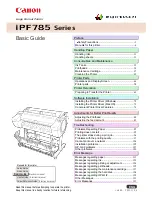
It may even seem like you are getting a great first layer and great sticking (which you
are) but later, you'll discover the part is nearly impossible to remove or your extruder will start
making that all too familiar TICK, TICK, TICK sound from missing steps. A perfect first layer will
go down smooth and consistently time after time.
TIP:
polish the tip of your nozzle! Charred filament and scratches on the very tip of the
nozzle are dragged over the layers as it moves around. Best case these leave a visible mark on
the print, worse case they rip the first (or higher) layer off the build plate.
#5 Slow Down.
Back to my guitar lesson example... The other thing my instructor taught me in that first
lesson was to practice slowly (using a metronome) until I nailed the measure(s) at a slow tempo.
Then, gradually and consistently, increase the speed. The same applies to 3D printing, print
slowly at first. This gives you time to observe what's going on (strategy #6) and just simplifies
everything. I like to start new folks at 20 to 25mm/s print speeds. What's the hurry? If you print
10 aborted prints at 50mm/s what have you gained (or lost)? Printing slow helps all parts of the
printer, from the mechanics to the extruder to the plastic filament coming out the nozzle, stay in
balance or equilibrium. Fast movements can highlight mechanical issues, extrusion issues, etc.
But when you are first starting out, you don't know how to identify and isolate these issues. In
fact, even with all of my experience, if something starts to go wrong, I slow down. That removes
a lot of variables and gives me a chance to see what's happening. I've identified everything from
loose pulleys to a worn joint on a delta arm to separating arms on magnetic ball joints! And, I've
helped a lot of folks identify other issues simply by slowing down.
#6 Watch What's Happening.
Especially in the early stages of learning, watch all aspects of the printer. Combined with
strategy #5 you'll start to develop an appreciation for how the slicer does its magic, how the
printer does its magic, and it is just simply fun to watch (especially a delta printer)! I highly
recommend putting a flag of some type on your extruder so you can actually watch retracts and
advances and watch the steady push of the filament. A piece of masking tape stuck to the shaft
is fine or print one of the pointer models. Watch that first layer print, that's how you'll see if there
is a problem and maybe even figure out why. For example, I noticed that the first layer wasn't
sticking in the same spot on my build plate. Turns out that I had some potato chip grease there
(don't ask)! A little wipe with isopropyl alcohol and I was back in business. Watch what happens
when the layer fan comes on. Is it coming on too early and causing the part to peal from the
print surface? Pay attention to the details of what's going on and then...
#7 Keep Notes.
I can't stress how important it is to keep notes. I have a word processor file I add notes
to as I go. In particular, I keep a section on the filaments I use and the detailed printing
parameters for them (strategy #9). Perhaps I'm becoming forgetful in my advanced age but I
don't like solving the same problem over and over again. If I keep a note about a problem and
my solution, I can usually find it again pretty quickly. Once comment on notes, don't be afraid to
purge! After a few years of doing this, my file got quite big.
97








































